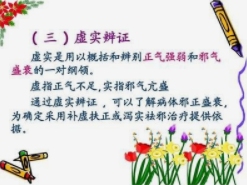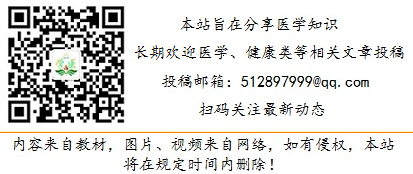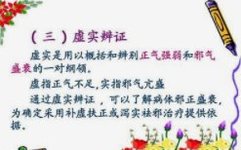
The differentiation of deficiency and excess (虚实辩证, xū shí biàn zhèng) is used to summarize and distinguish the strength of the righteous qi and the decline of pathogenic qi. Excess syndrome (实证, shí zhèng) mainly depends on the prevalence of pathogenic qi, while deficiency syndrome (虚证, xū zhèng) primarily depends on the deficiency of righteous qi, as stated: “When pathogenic qi is strong, it is excess; when essence and qi are depleted, it is deficiency” (《素问·通评虚实论》).
Distinguishing whether a disease is deficiency or excess is the main basis for determining the method of supporting the righteous qi or expelling pathogenic factors during treatment.

Deficiency Syndrome (虚证, xū zhèng)
Deficiency syndrome refers to the symptoms resulting from insufficient righteous qi and declining organ function. The formation of deficiency syndrome has two aspects: congenital insufficiency and acquired malnutrition, with the latter being predominant. For example, dietary imbalance can lead to instability of the acquired essence; emotional strain can injure the qi and blood of the organs; excessive sexual activity can deplete the kidney’s essence; or prolonged illness without proper treatment can damage the righteous qi, all of which can lead to deficiency syndrome. Deficiency syndrome includes various types of deficiency such as yin, yang, qi, blood, essence, and fluids, as well as different organ deficiencies. Here, we will only introduce four common manifestations of deficiency syndrome.
1. Blood Deficiency Syndrome (血虚证, xuè xū zhèng) refers to insufficient blood that fails to nourish the organs and tissues, leading to symptoms such as pale or sallow complexion, pale lips, dizziness, palpitations, insomnia, numbness in hands and feet, reduced menstrual flow or amenorrhea in women, pale tongue, and thin, weak pulse.
2. Qi Deficiency Syndrome (气虚证, qì xū zhèng) refers to the decline of overall or specific organ function, presenting symptoms such as dull complexion, shortness of breath, low voice, fatigue, spontaneous sweating, worsening symptoms with exertion, pale tongue, and weak pulse.
3. Yin Deficiency Syndrome (阴虚证, yīn xū zhèng) occurs due to the depletion of yin fluids in the body, with clinical manifestations including afternoon fever, night sweats, flushed cheeks, dry throat, heat in the palms and soles, short yellow urine, red tongue with little coating, and thin, rapid pulse.
4. Yang Deficiency Syndrome (阳虚证, yáng xū zhèng) results from insufficient yang qi in the body, presenting symptoms such as cold limbs, pale complexion, fatigue, spontaneous sweating, lack of thirst, clear and frequent urination, loose stools, pale tongue with white coating, and weak pulse.
Excess Syndrome (实证, shí zhèng)
Excess syndrome refers to symptoms resulting from excessive pathogenic qi and hyperfunction of the organs. The causes of excess syndrome can be twofold: external pathogens invading the body, or internal organ dysfunction leading to the accumulation of pathological products such as phlegm, dampness, and blood stasis. Due to the different nature and location of pathogenic qi, the clinical manifestations also vary. Common symptoms include fever, robust physique, loud voice, irritability, fullness and pain in the chest and abdomen, pain upon pressure, constipation or severe diarrhea, short and red urine, thick and greasy tongue coating, and strong pulse.
Distinguishing Between Deficiency and Excess
The differentiation between deficiency and excess is primarily based on the patient’s physical condition, mental state, strength of voice and breath, tenderness or resistance to pressure at painful areas, as well as changes in tongue and pulse (Table 6-2).

Relationship Between Deficiency and Excess
The changes in disease are a complex process, often influenced by various factors such as constitution, treatment, and care, leading to intermingling and transformation between deficiency and excess.
1. Intermingling of Deficiency and Excess occurs when both deficiency and excess symptoms appear simultaneously in a patient. This can manifest as excess being predominant with some deficiency symptoms, or deficiency being predominant with some excess symptoms, or both being equally significant. For example, in patients with cirrhosis and ascites, clinical signs may include abdominal distension, visible veins, and difficulty with urination (excess symptoms), but also weight loss, weakness, and a thin, wiry pulse (deficiency symptoms).
(1) Excess with Deficiency: This syndrome often occurs in patients with excess syndrome where the righteous qi is damaged, and can also be seen in patients who were originally deficient and then contracted an external pathogen. The characteristic is that excess pathogenic factors are predominant, while deficiency is secondary.
(2) Deficiency with Excess: This syndrome often occurs in patients with severe excess syndrome that has persisted for a long time, leading to significant damage to the righteous qi, with residual pathogenic factors still present. The characteristic is that deficiency is predominant, while excess is secondary.
(3) Equal Presence of Deficiency and Excess: This syndrome is commonly seen in two situations: one is when there was originally severe excess syndrome that has persisted for a long time, leading to significant damage to the righteous qi, while the excess pathogenic factors have not diminished; the other is when the righteous qi was originally weak and then contracted a significant external pathogen. The characteristic is that both deficiency and excess are very pronounced, indicating a severe condition.
2. Transformation Between Deficiency and Excess During the progression of a disease, due to the struggle between righteous and pathogenic qi, deficiency and excess can transform into each other under certain conditions. Excess can transform into deficiency, often due to improper treatment of excess syndrome or excessive pathogenic qi damaging the righteous qi, leading to symptoms such as low fever, weakness, pale complexion, and thin, weak pulse; transformation from deficiency to excess is less common, but can occur when a patient with deficiency syndrome develops intermingled symptoms. For example, in cases of spleen deficiency with food stagnation, symptoms may include reduced appetite, fatigue, and weakness due to spleen deficiency, but as the spleen fails to transport properly, intermingled symptoms such as abdominal distension, sour belching, foul-smelling stools, and thick greasy tongue coating may appear.
3. True and False Deficiency and Excess There is a distinction between true and false deficiency and excess, and when differentiating syndromes, it is important to discern the true from the false to avoid the pitfalls of “false deficiency and false excess.” Distinguishing the true and false deficiency and excess is not the same as identifying intermingled symptoms, and careful examination is necessary.
In summary, when distinguishing true from false deficiency and excess, attention should be paid to the following points: ① the strength or weakness of the pulse, whether it is strong or weak, and how it feels when taken floating or sinking; ② the condition of the tongue, whether it is plump and tender or thin and old; ③ the tone of voice, whether it is high and bright or low and timid; ④ the patient’s constitution, the cause of the disease, the duration of the illness, and the course of treatment.

Electronic Textbooks
| Internal Medicine | External Medicine | Pediatrics |
| Diagnostics | Obstetrics and Gynecology (8th Edition) | Infectious Diseases |
| Types of Infectious Diseases | Symptoms and Signs | Practical Skills |
| Systemic Anatomy (8th Edition) | Regional Anatomy (8th Edition) | Neurology (9th Edition) |
| Emergency Management | Emergency and Disaster Medicine | Dermatology and Venereology |
Physiology (9th Edition) |
Obstetrics and Gynecology (9th Edition) | |
Basic Nursing Skills for Elderly Care Workers |
||
Guidelines for Elderly Care Practice |
 Traditional Chinese Medicine – Renwei 8th Edition
Traditional Chinese Medicine – Renwei 8th Edition

